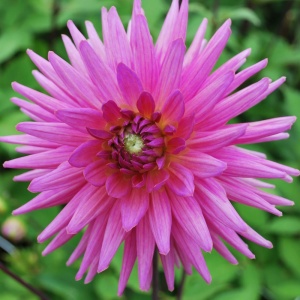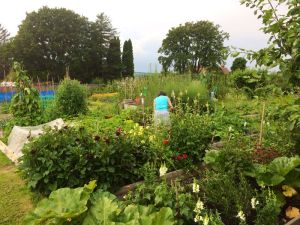Despite the chill winds of mid-March, now is the time to start off those early seeds for summer crops. I sowed my chillis (Apache), aubergines (Bonica) and sweet peas and lobelia just over a week ago before escaping to the Alps for a sunny ski break. The lobelia (dark blue Crystal Palace) are up already, but no sign of the chillis and aubergines – not that I expected there to be! They can take up to 3 weeks, even in a heated propagator, so all the more reason to get them in early. You can, of course, buy young plants later on, but that’s much more expensive and I find they are more prone to disease and aphids if you buy them in, presumably because they are hot-housed in great numbers…. The sweet peas (Singing the Blues) are sitting 5 to a pot on the sunny conservatory windowsill and usually take around a fortnight to germinate. I soaked the seeds in warm water overnight this time before sowing; this used to be recommended practice, but advice seems to have changed in recent years, resulting in much worse germination in my experience – so back to the old tried and trusted methods! I usually sow another batch of seed straight out in the open in April too, and they invariably catch up by mid-summer, and extend the picking season too.
Today I’ve planted parsley (Champion) and basil (British Basil), both in small pots in the propagator, and also three kinds of leeks : Nipper for early baby leeks from September onwards, Pandora for mid-season leeks and the blue-green Bandit for late winter leeks. Last year’s plantings are still going strong; in fact, I’m probably going to have to lift and store them in the next couple of weeks to make room for the new-season crops! Yes, they are in the ground a long time, but such a good-value crop for very little outlay and effort…. I would hate to be without my leeks! Each packet of seed usually contains plenty for two years of sowing – watch out for parsley, though, as fresh seed usually gives best results.
I’ve also potted up some new dahlias from Sarah Raven, ordered a few weeks ago: I love browsing through her catalogue (www.sarahraven.com) and try and experiment with new ones each year, if I can find room! I jettisoned some single yellow dahlias I’d grown from seed last year, which didn’t go with my deep red, white and pink colour scheme down on the allotment, so just room to shoe-horn in a couple more! I’ve gone for a white and purple bicolour collection: Edge of Joy and Alauna Clair Obscur, as well as two pinks: a spikey cactus type, Sugar Diamond, and Gerrie Hoek, a pale salmon pink waterlily type – can’t wait! I find it’s best to start them in pots in my grow rack, allowing them to get going away from the harmful effects of slugs, then transfer them out when the shoots are growing well. Once they’re established, I usually leave them out to overwinter as they’re planted deep enough in the raised beds to withstand the worst of the winter weather, even when we had sustained periods of ice and snow a few years back.
My final task of the day was to pot up the tuberous begonia corms I bought last year and had overwintered, well-wrapped in brown paper bags, in the shed. The corms had tripled in size since last spring and seem firm enough, so I’ve potted them up in large pots and put them in the grow rack with the dahlias – just hope we don’t get any severe cold spells now!
Just time after all that for a brisk walk down to the allotment with the dogs to bring back some leeks and purple sprouting broccoli to accompany my duck breast and parsnip purée for dinner. Sublime…











